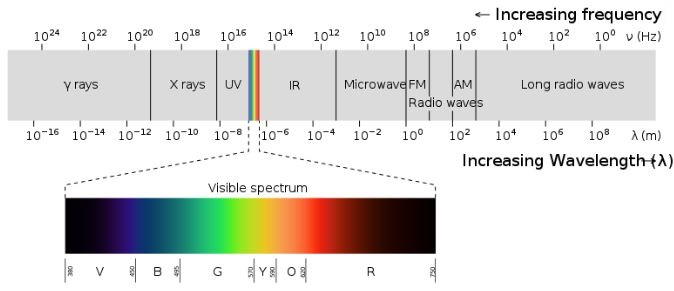
Why can transverse waves travel in a vacuum?
Answer
421.5k+ views
Hint: In vacuum, there is no medium for waves to propagate, so longitudinal waves like sound cannot travel in a vacuum. Only some transverse waves like electromagnetic waves can travel. Longitudinal waves like sound waves need a medium to propagate and transverse waves like light don’t need any medium to propagate.
Complete answer:
Only transverse waves which do not need a medium to propagate can travel in vacuum. The electromagnetic spectrum consists of a range of radiations that can travel through vacuum.The spectrum consists of radio waves, infrared waves, visible light, ultraviolet radiation, x-ray, and gamma-ray. This is possible because electromagnetic radiation consists of both electric field and magnetic field which alternates.
A changing magnetic field will induce a changing electric field and vice-versa the two are complementary to each other. These changing fields generate electromagnetic waves. This implies that electromagnetic waves can travel not as they were through the air and solid medium, but also through vacuum. This is why the light from the sun is able to reach us.

Note: Another example for the transverse waves is the surface ripples of water, but it needs a medium to propagate and will not travel in vacuum. Sound waves are longitudinal waves, that is they travel as crest and trough. They need a medium to propagate. This is the reason why we cannot hear the noise of asteroids colliding in space. This also makes astronauts in space unable to hear each other no matter how close they stand, they communicate through converting their voice to electromagnetic waves and sending them to each other.
Complete answer:
Only transverse waves which do not need a medium to propagate can travel in vacuum. The electromagnetic spectrum consists of a range of radiations that can travel through vacuum.The spectrum consists of radio waves, infrared waves, visible light, ultraviolet radiation, x-ray, and gamma-ray. This is possible because electromagnetic radiation consists of both electric field and magnetic field which alternates.
A changing magnetic field will induce a changing electric field and vice-versa the two are complementary to each other. These changing fields generate electromagnetic waves. This implies that electromagnetic waves can travel not as they were through the air and solid medium, but also through vacuum. This is why the light from the sun is able to reach us.

Note: Another example for the transverse waves is the surface ripples of water, but it needs a medium to propagate and will not travel in vacuum. Sound waves are longitudinal waves, that is they travel as crest and trough. They need a medium to propagate. This is the reason why we cannot hear the noise of asteroids colliding in space. This also makes astronauts in space unable to hear each other no matter how close they stand, they communicate through converting their voice to electromagnetic waves and sending them to each other.
Recently Updated Pages
Transformation Matrix Explained: 4x4 Types & Uses (2025 Guide)

Unit Matrix Explained: Definition, 3x3 & 2x2 Examples for 2025

Sum of Cubes Formula: Find the Sum of Cubes of n Natural Numbers

Surjective Function Explained for Students (2025)

Multiplying and Dividing Exponents: Rules & Step-by-Step Guide (2025)

Factored Form Explained: How to Convert & Examples for 2025

Trending doubts
Draw a diagram of nephron and explain its structur class 11 biology CBSE

The process in which gas transform into solid is called class 11 chemistry CBSE

Distinguish between Mitosis and Meiosis class 11 biology CBSE

How many quintals are there in one metric ton A 10 class 11 physics CBSE

State which of the following situations are possible class 11 physics CBSE

Identify the olfactory element in the following vanilla class 11 chemistry CBSE




